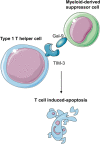Advances in Osteosarcoma
- PMID: 37329384
- PMCID: PMC10393907
- DOI: 10.1007/s11914-023-00803-9
Advances in Osteosarcoma
Abstract
Purpose of review: This article gives a brief overview of the most recent developments in osteosarcoma treatment, including targeting of signaling pathways, immune checkpoint inhibitors, drug delivery strategies as single or combined approaches, and the identification of new therapeutic targets to face this highly heterogeneous disease.
Recent findings: Osteosarcoma is one of the most common primary malignant bone tumors in children and young adults, with a high risk of bone and lung metastases and a 5-year survival rate around 70% in the absence of metastases and 30% if metastases are detected at the time of diagnosis. Despite the novel advances in neoadjuvant chemotherapy, the effective treatment for osteosarcoma has not improved in the last 4 decades. The emergence of immunotherapy has transformed the paradigm of treatment, focusing therapeutic strategies on the potential of immune checkpoint inhibitors. However, the most recent clinical trials show a slight improvement over the conventional polychemotherapy scheme. The tumor microenvironment plays a crucial role in the pathogenesis of osteosarcoma by controlling the tumor growth, the metastatic process and the drug resistance and paved the way of new therapeutic options that must be validated by accurate pre-clinical studies and clinical trials.
Keywords: Immune checkpoint inhibitor; Immunotherapy; Osteosarcoma; Personalized medicine; Tumor microenvironment; Tumor targeted therapy.
© 2023. The Author(s).
Conflict of interest statement
The authors have no competing interests to declare that are relevant to the content of this article.
Figures






References
Publication types
MeSH terms
Substances
LinkOut - more resources
Full Text Sources
Medical
Research Materials

